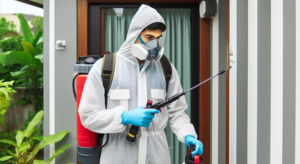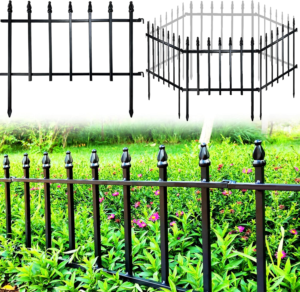Pests are organisms that damage or spoil crops, plants, livestock or household possessions. They also pose a threat to human health by spreading disease.
Pest control involves prevention, suppression and eradication. Prevention is preventing an infestation from occurring, while suppression reduces the number of pests to an acceptable level. Contact Killian Pest Control now!

Eradication is destroying all pests in an area. Typical pests include rodents (rats, mice, etc), ants and cockroaches.
Keep Your Home Clean
One of the most important things you can do to prevent pest infestations is to keep your house clean. This includes sweeping and washing floors, wiping countertops, and disposing of trash properly. It also means storing food in sealed containers and avoiding leaving out crumbs and spills.
Pests are attracted to dirty, unkempt areas. They thrive in environments where they can hide and breed. Therefore, keeping your home clean will make it more difficult for them to find a place to call home.
Besides preventing pests from breeding in your house, cleaning regularly will help sanitize and improve your overall mood. It will also protect you from disease-causing pathogens, such as fungi and bacteria. Pests like cockroaches, ants, and rodents can spread these pathogens by contaminating surfaces they touch. They can also trigger allergies and asthma, particularly in children. Furthermore, mosquitoes and fleas are carriers of diseases that can be fatal when ingested or contacted.
Inspect your home regularly, especially the exterior and interior, to identify entry points for pests. Check for gaps around doors and windows, cracks in the foundation, and openings where pipes and wires run through walls. Caulking and weatherstripping can help seal these areas to prevent pests from getting inside your home.
It is also a good idea to trim trees and plants close to your home, and to remove any debris that may be collecting rainwater or standing water. Additionally, you should regularly clean your gutters to prevent blockage. This will ensure that the rainwater is flowing freely and not pooling near your home, which can cause a variety of problems, including mold and mildew.
You should also wipe down kitchen countertops and sweep the floor frequently to remove crumbs and spills, as these can be an attractive source of food for pests. Make sure you dispose of garbage regularly and sanitize your trash containers both indoors and out to prevent pests from finding them. Lastly, you should clean and wash your dishes after each meal to avoid attracting pests. It is also a good idea to separate your trash into recyclable and non-recyclable waste, and to use airtight bins for storage.
Seal Off Entry Points
A home or business might feel like a fortress, but to mice, rats, and other pests, it is often just a series of small gaps and cracks where they can easily sneak in. This is why sealing off these entry points is so important in maintaining a pest-free environment. By reducing the number of places pests can get into your building, you also reduce the potential damage they cause and the stress of a pest infestation.
Rodents can enter homes through many different areas, from the attic and crawl spaces to basements and garages. Using caulk, steel wool, and other weather-resistant materials, you can seal off these common entry points to protect your property from rodents. You can also install door sweeps on exterior doors and use screens to keep rodents out of windows and vents.
Sealing off entry points also improves your energy efficiency. These cracks and gaps allow cold air to seep in during the winter, forcing your heating and cooling system to work harder. By filling these spaces with insulation, you can save on your utility bills and protect your property from pests at the same time.
The single most effective way to protect your home or business from pests is through exclusion, a preventive strategy that involves eliminating the open entry points where pests might gain access. This method of pest control is safer, more effective than traditional treatments, and helps reduce the reliance on chemical pesticides.
When performed regularly, exclusion can help you avoid a variety of pest issues throughout the year, including overwintering flies and cluster flies. It can also prevent cockroaches and other invasive insects from infesting your space. Exclusion is an excellent addition to any IPM plan, and can be implemented at the same time as a regular pest inspection. A professional pest control company can conduct a thorough inspection and recommend the appropriate barriers for your property. Contact us to learn more about the benefits of implementing exclusion strategies.
Remove Vegetation Around the House
The warm weather has many of us spending time outdoors enjoying the sunshine and fresh air, but if you’re not careful it can also be prime pest-attracting conditions. Overgrown vegetation and rotting debris can be perfect habitats for insects, rodents and other pests. When these materials come into contact with your home, they can encourage infestations and damage the structure. To avoid this, it is essential to regularly clear vegetation from around your property.
Unwanted weeds and plants can be difficult to control without the help of an experienced professional, but they can also pose health, safety and fire hazards if left to grow unchecked. Clearing unwanted weeds can prevent them from taking over your lawn, reduce fire risks and increase your property value.
Plants, bushes and other greenery can create privacy and add aesthetic value to your home or business, but if they are too close they can promote pest issues. Infestations can start in the vegetation and work their way to your house through cracks and crevices. This can lead to wood rot, fungal growth and insect damage to the exterior of the home. Keeping vegetation away from the house can help prevent these problems, and keep insects like carpenter ants, termites and cockroaches at bay.
Properly pruning your trees can also help prevent infestations. Overgrown tree branches can act as bridges for pests to enter your home, and removing dead or damaged branches helps to protect the structural integrity of your house. Additionally, removing fruit or seed pods from palm trees (such as pindo and date palms) can reduce the likelihood of rodents using these plants as a food source.
In addition to preventing insect infestations, regularly clearing vegetation can improve your home’s energy efficiency and make it easier for you to keep the inside of your home clean. It is important to frequently vaccum and dust, especially in areas where dirt collects such as under furniture or behind cupboards, but it can be challenging to get into the tiny spaces where insects hide and breed.
If you want to reduce your risk of pest infestation, contact the professional team at Terminix Wil-Kil today. Our trained inspectors can determine the root cause of your pest problem and implement a treatment plan that will keep them out for good.
Avoid Food Sources
Keeping food sources away from pests will greatly reduce the need for pest control. However, it is impossible to stop some pests from gaining access to food. This is why it is important to follow best practices for food-related facilities when it comes to handling and storing food products.
One of the biggest reasons that people call on pest control is because of rodent infestations. In addition to causing damage to property such as electrical equipment and wiring, rodent droppings can spread diseases like salmonellosis and even cause illness in people who eat contaminated food.
Cockroaches, flies and other pests can also carry dangerous bacteria which can make people very sick. In a restaurant or hotel, these pests can contaminate food and food-contact surfaces, posing a health risk to customers and employees alike.
Food establishments need to be vigilant and keep up with regular inspections, especially in areas where pests can find food, warmth, moisture and shelter. This includes stairwells, shelves, lockers, worktables, and machinery storage spaces. Keep product storage areas clean and organized to eliminate potential hiding spots. Maintain proper ventilation to help prevent excess moisture in these areas. Keep garbage disposal areas free of debris and food scraps to prevent attracting pests.
It is also important to note that some natural forces can have an impact on the number of pests in a given area, including climate, natural enemies, the availability of water and the presence of natural barriers. These factors can affect the ability to keep pest populations in check, so it is important to understand how they can affect an Integrated Pest Management program.
Rodents are often a concern for businesses and homes because of their ability to chew through wires and insulation. They are also able to squeeze through small openings and can build nests in places where humans don’t expect them. Regular inspections can help detect signs of rodent infestation, such as visual sightings, droppings and gnaw marks.
Another thing to keep in mind is that pesticides are typically designed to only target the pest they are intended for. This can result in other animals or plants that are unaffected being harmed by the treatment. This is why it is vital to only use pesticides when necessary and to always follow label instructions carefully.



